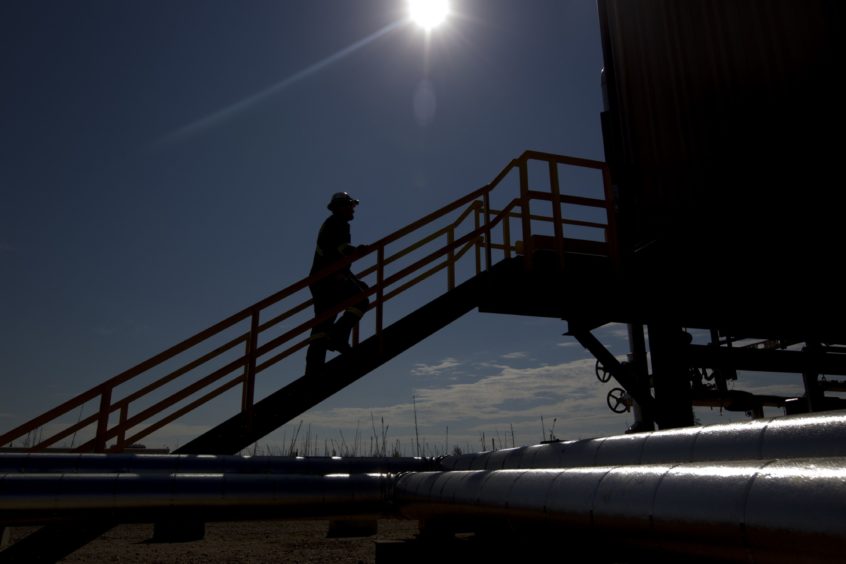
Brent oil erased gains as the market shrugged off an attack on the world’s largest crude terminal in Saudi Arabia.
Futures in London earlier surged above $71 a barrel, the highest since January 2020, before later trading below $70.
The assault on a storage tank farm at the Ras Tanura terminal on Sunday was intercepted, Saudi Arabia said, and oil output appeared to be unaffected.
Oil jumped after a Saudi energy facility was attacked, but later erased gains
Oil has rebounded this year amid OPEC+ supply cuts and recovering demand, with economies emerging from the coronavirus crisis.
The rally quickened last week after the producer alliance made a surprise pledge to keep output steady in April, prompting a raft of investment banks to raise their price forecasts.
“There are two elements, no damage speaks for the spike in prices to disappear,” said Giovanni Staunovo, a commodity analyst at UBS Group AG. “There’s also an added risk premium as tensions in the Middle East are a topic again, but it is difficult to say which dominates in the end.”
There was a mixed picture for crude in broader markets. U.S. President Joe Biden is on the cusp of his first legislative win, with the House ready to pass his $1.9 trillion Covid-19 relief plan. But the dollar also climbed, reducing the appeal of commodities priced in the currency.
Prices
Brent for May settlement traded down 0.5% at $69.03 a barrel as of 1:49 p.m. London time, after climbing as high as $71.38 earlier
West Texas Intermediate for April delivery also fell 0.5%, trading at $65.78
WTI earlier hit its highest intraday level since October 2018
Monday’s earlier Brent rally north of $70 may cause a headache for Asian refiners, which are warning that the rapid surge and spike in volatility will hurt demand and whittle away still-tight processing margins. Saudi Arabia has also boosted its official selling prices to buyers in the region for April.
Mideast Tensions
Saudi Arabia said the Ras Tanura site on the country’s Gulf coast was targeted by a drone from the sea.
The terminal is capable of exporting about 6.5 million barrels a day — almost 7% of demand — and, as such, is one of the world’s most protected facilities.
It’s the most serious attack on Saudi oil installations since a key processing facility and two oil fields came under fire in September 2019.
The assault follows a recent escalation of hostilities in the Middle East region after Yemen’s Houthi rebels launched a series of attacks on Saudi Arabia.
The new U.S. administration also carried out airstrikes in Syria last month on sites it said were connected with Iran-backed groups.